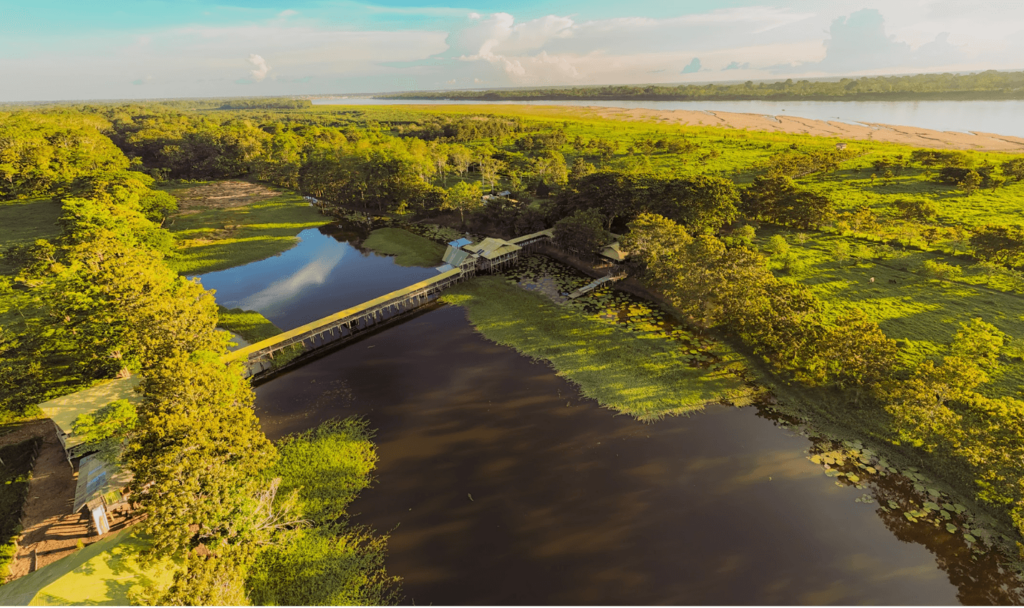
Imagine gliding down the mighty Amazonas River, hearing the jungle whisper as night falls, and waking to the songs of birds found nowhere else on Earth. When you reach Monkey Island, dozens of tiny, curious monkeys leap from branch to branch to greet you.
Here, in the heart of Amazonia, where two nations meet and their cultures and geographies intertwine, the integration of productive sectors presents a unique opportunity to promote economic, social, and environmental development in the region. As highlighted in the recent Inter-American Development Bank (IDB) study “Amazonia’s Border Regions: Toward Sustainable Productive Development” (2025), the twin cities of Leticia (Colombia) and Tabatinga (Brazil) showcase how sustainable tourism can become a driver for integration and development in border regions.

The IDB is implementing a Regional Public Good (RPG) initiative in Amazonia designed to strengthen local institutions, boost the region’s productive sectors, and deepen cross-border cooperation.
Transforming tourism in the twin border cities
At the heart of this project is an initiative to develop tourism in Leticia and Tabatinga. The plan seeks to harness Amazonia’s tourism potential—rooted in its extraordinary biodiversity and cultural riches—to make the tourism sector a catalyst for sustainable development and cross-border integration.
Leticia and Tabatinga could offer experiences found nowhere else on Earth: walking the trails of Amacayacu National Park in search of medicinal plants, sharing a traditional meal with the Magüta community in San Pedro de los Lagos, or taking a workshop in Indigenous crafts while listening to myths of Amazonia inside a firelit maloca (traditional community house).

Implementing this plan will involve transitioning from the current fragmented system to a more collaborative and sustainable model. Today, the sector consists mainly of small and family-run businesses working independently, providing basic services or supporting part of short, predefined itineraries. Defining a shared vision for the sector and increasing collaboration among all stakeholders in the tourism value chain on both sides of the border will help create a richer, more connected range of travel experiences. This will showcase the region’s unique identity and attractions, ensuring that everyone involved benefits equally.
In this way, tourism will do more than just attract visitors to the area—it will become a source of cultural pride, a channel for sharing ancestral knowledge, and a symbol of community identity.
This synergy will breathe fresh life into the region as a destination, raising its profile within Colombia, Brazil, and beyond, while helping to preserve the cultural and natural riches on both sides of the border. In this way, Leticia and Tabatinga will position themselves as a one-of-a-kind destination, a bridge between two cultures where every journey becomes a story. Traveling to this part of Amazonia is an encounter with biodiversity and a chance to discover a world where nature and cultural traditions still dance to the same beat.
A truly unique destination
The two cities are much more than border towns—they are gateways to the vastness of Amazonia, a land defined by its extraordinary biodiversity, rich cultural heritage, and breathtaking landscapes. This region, where nature and culture are inextricably connected, offers visitors unparalleled travel experiences filled with exploration and discovery.
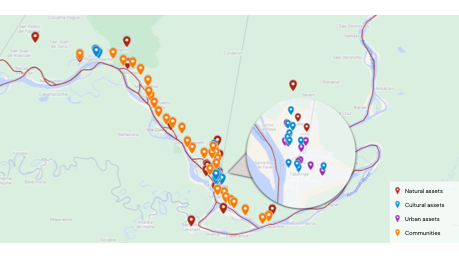
Source: IDB, will support from THR Strategic Tourism Advisors, 2025.
What makes Leticia and Tabatinga such a unique destination is that they offer visitors authentic, socially and environmentally responsible experiences. With its unmatched natural and cultural wealth, the area has everything it takes to become a benchmark for ecotourism and mindful travel. Visitors can immerse themselves in the spirit of Amazonia by taking part in experiences that respect the environment and support the local economy.
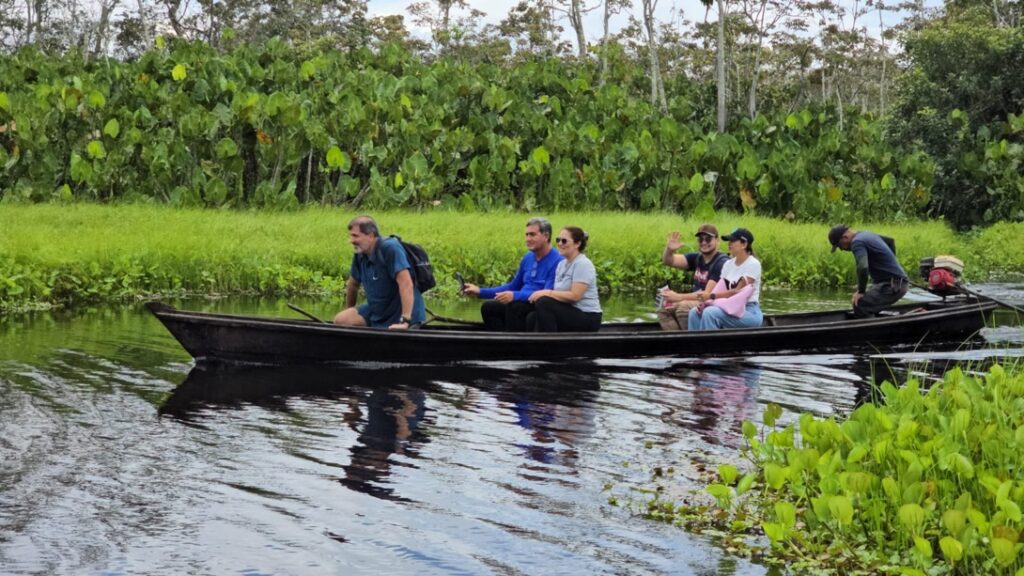
Source: IDB, with input from THR Strategic Tourism Advisors, 2025.
The main opportunities for tourism in Leticia–Tabatinga center on ecotourism and cultural immersion, with a rich variety of experiences for travelers. The lifeline of the region is the Amazonas River, inviting visitors to explore its diverse ecosystems and enjoy a wide range of activities. As a natural border, it offers the unique experience of being in two countries at once as you float down it. During the high-water season, travelers can reach areas near the river that are only accessible by boat, while the dry season opens up opportunities for hiking, wildlife watching, and other outdoor adventures. Boat trips often include jungle excursions like the popular Night in the Jungle experience, which features guided night walks and accommodation in ecolodges, far from the urban hustle and bustle.
Amazonia’s vibrant Indigenous heritage is another major attraction, reflecting the cultural diversity and interwoven traditions that make the tri-border area so unique.
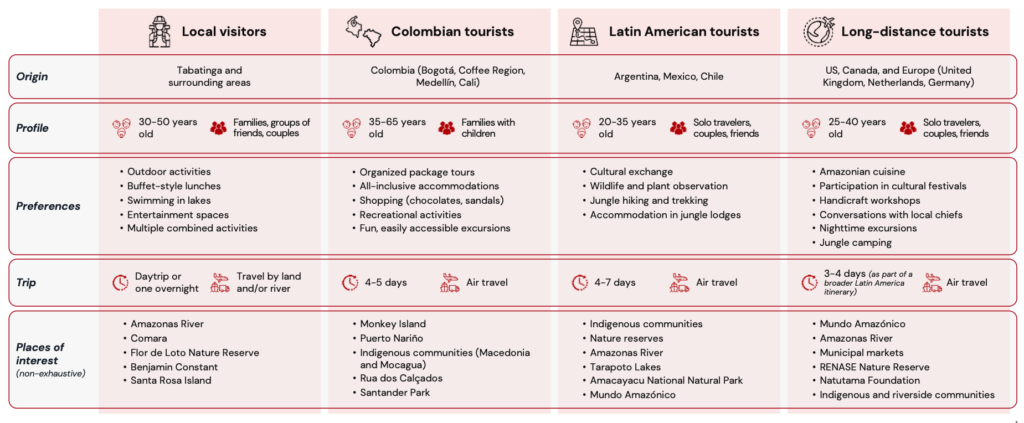
Source: IDB, based on THR Strategic Tourism Advisors and information-sharing workshops held with local stakeholders in January 2025
Benefits for local communities
Community-based tourism was identified as a highly promising segment, one that Indigenous communities across the region have embraced. Many communities already partner with local tour operators and are actively involved in shaping the region’s tourism sector.
In communities like San Pedro de Los Lagos or Mocagua, visitors can learn the art of natural fiber weaving, participate in traditional welcome rituals, or help their host families prepare dishes such as patarashka—fresh fish grilled in bijao leaves. These experiences aren’t staged performances—they’re authentic parts of everyday life.
Building a more cohesive tourism sector brings benefits for visitors and creates positive impacts for local communities. Tourism has already sparked a cultural revival, inspiring schools to reintroduce traditional crafts and Indigenous language learning, fueled by travelers’ growing desire to take part in authentic experiences and learn more about these cultures.
In Leticia, young members of the Tikuna community could teach their language through interactive workshops for tourists. In Tabatinga, traditional agricultural practices could become hands-on cultural experiences, such as the processing of cassava into the flour known as fariña.
Promoting tourism in this way can create jobs, improve local infrastructure, and reinforce cultural identity. Sustainable tourism also plays a vital role in protecting Amazonia’s extraordinary biodiversity, helping to balance economic growth with environmental stewardship.
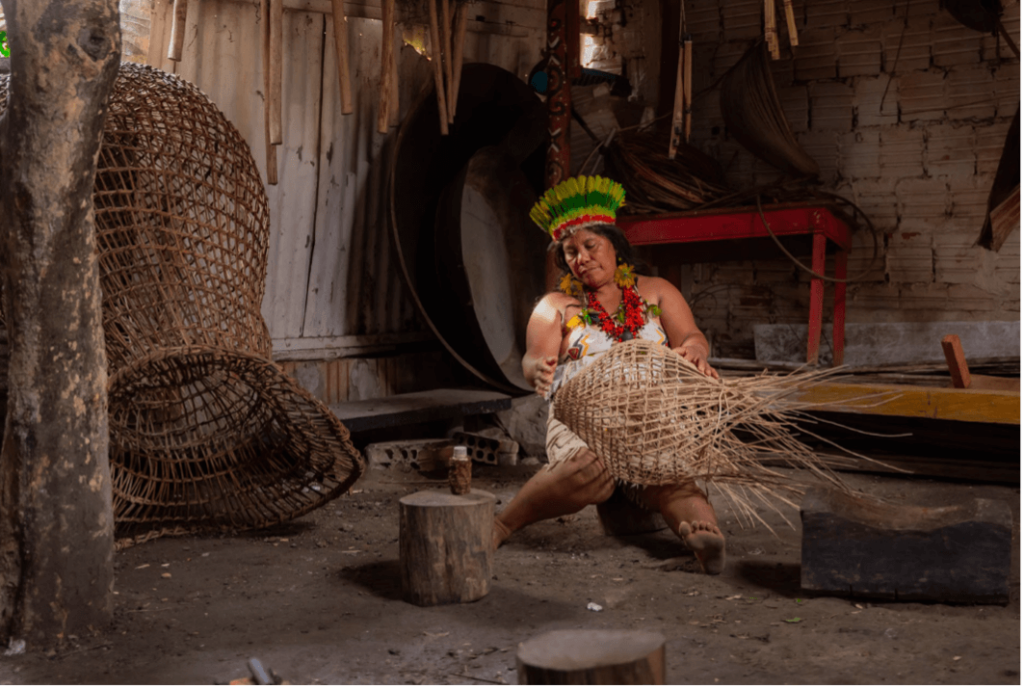
Source: Municipality of Leticia, 2025
Challenges and opportunities
There is enormous potential for Leticia and Tabatinga to diversify their tourism offerings and establish themselves as a leading global ecotourism destination. As European travelers show increasing interest in Amazonia, inspired by global trends toward nature-based travel experiences, these regions are perfectly positioned to attract visitors seeking authentic, responsible, and sustainable adventures.
Diversifying the tourism offer by tailoring experiences to different types of travelers will open up new opportunities at the crossroads of nature, culture, adventure, and wellness.
Ecotourism and responsible travel are booming, and both cities are strategically located to meet this rising global demand. The region will appeal to mindful travelers looking not only to unwind, but also to actively support the conservation of local ecosystems. One promising area for growth is building experiences around the region’s vibrant local festivals, which remain largely untapped as tourism experiences. These celebrations could become rich, participatory experiences for visitors, inviting them to engage directly with local traditions.

One of the features that sets the region apart from the rest of the world is the tri-border itself: in just minutes, travelers can cross from Colombia into Brazil or Peru, experiencing three distinct versions of Amazonia on a single trip, each with its own culture, food traditions, festivals, and connections to the river. This unique geography makes Leticia and Tabatinga a natural and cultural laboratory of cross-border integration—something no other ecotourism destination can offer.
However, the region also faces significant challenges that urgently need to be addressed for it to realize its full potential as a tourism destination. One of the most critical is binational governance. Despite ongoing local cooperation efforts, there is still no formal framework for joint planning or shared infrastructure between Colombia and Brazil. Tourism policies need to be seamlessly integrated, with a focus on cross-border collaboration to strengthen the connectivity, safety, and competitiveness of the destination, ensuring that projects deliver tangible local benefits.
Concerns about safety, especially after dark, and reports of illegal activities damage the region’s reputation as an appealing tourist destination. At the same time, insufficient infrastructure—combined with limited air and river connectivity—remains a major barrier to the sector’s growth. Irregular flight schedules and the lack of basic services in some tourist areas further limit visitor access. Tourism is also disrupted by environmental fluctuations, such as the droughts that affect the navigability of the Amazonas River.
Another major challenge is adapting tourism experiences to Amazonia’s changing climate. When water levels are high, travelers can travel by boat to riverside communities and hidden lakes, but during the dry season, the offer must shift to hiking, adventure sports, and land-based experiences. Making the most of the dual nature of the area—showing visitors two Amazonias in one—implies both logistics challenges and creative opportunities.
Overcoming these challenges will require strategic investments in sustainable infrastructure and closer public–private collaboration to build a resilient tourism sector.
A future of integration, social inclusion, and sustainable development
The Amazonia RPG has become a vital tool for addressing the region’s challenges, providing a shared framework that brings together productive sectors while fostering respect for Indigenous communities and the conservation of the environment.

Source: IDB (2024).
This initiative has led to the creation of a pioneering binational coordination mechanism linking Leticia and Tabatinga. Through joint working groups, the municipal governments of the two cities have strengthened cross-border governance, encouraging dialogue and collaboration to design sustainable development strategies for key sectors like tourism. This binational effort goes beyond economic growth—it also tackles shared challenges such as protecting the environment and improving the well-being of Indigenous communities.

Source: THR Strategic Tourism Advisors, 2025.
With strong local leadership and support from the IDB, Leticia and Tabatinga are spearheading a transformation across Amazonia. Their aim is to establish the area as a destination that champions conservation, social inclusion, and sustainable growth while preserving its identity and natural resources. This model, grounded in respect for nature and local communities, is set to become a milestone for the region and a benchmark for others. It demonstrates how local leadership and cross-border integration can spark meaningful, lasting change.
This article was drafted with support from Sebastián González Saldarriaga (Head of the Private Sector, Synergies, and Trade Unit, IDB), Juana Isabel Hoyos (IDB Consultant), and Paula Sanches (IDB Consultant).

Leave a Reply